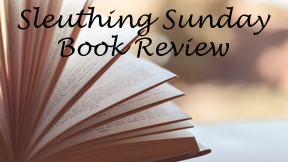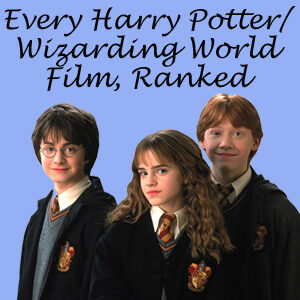As the inventor of “Harry Potter” with riches flowing in for life, J.K. Rowling could do whatever she wanted. Luckily for fans of great detective fiction, she chose this genre and is just as skilled at it as children’s fantasy writing. The author starts this new branch of her career with “The Cuckoo’s Calling” (2013). (The 2012 small-town dramedy “The Casual Vacancy” is a buffer between Harry Potter and Cormoran Strike).
Writing as Robert Galbraith (not that that fools anyone, as the book jacket itself notes that Galbraith is Rowling), the author has gotten less hype for the Strike books than for the Potters. That’s fair, because the Potters redefined the YA category as suitable entertainment for all ages, such was her world-building imagination and flair for adjective usage.
A successful genre switch
“The Cuckoo’s Calling,” by comparison, doesn’t redefine anything. It’s just a plain ole wonderfully plotted mystery, set in present-day London but featuring the traits of greats such as Agatha Christie. Rowling is famous for her detailed notes about the Wizarding World, and I imagine she must’ve had similarly thick notebooks for plotting the first Strike novel.

“The Cuckoo’s Calling” (2013)
Author: J.K. Rowling, writing as Robert Galbraith
Genre: Mystery
Series: Cormoran Strike No. 1
Setting: London, early 21st century
It’s dense, but not overly complex or hard to read. It’s engrossing, and fairly clued, with no unnecessary side plots. Ultimately, the mystery is tighter and fairer than some mysterious subplots of “Harry Potter,” such as the question of R.A.B.’s identity; she has improved in this genre. Her writing style is such that I wouldn’t have known this was Rowling if the secret had been kept. By cutting back on adjectives, she gives the impression of switching from childlike to mature writing.
She includes one new against-the-rules trait: She shifts POVs within the same chunk of text. A fair number of authors (even great ones) use this style that writing teachers would frown upon, but it’s striking here because we get so much into the head of private eye Strike and his secretary Robin. Within a passage, we see what he’s thinking about her, and then what she’s thinking about him.
Both are fascinating characters. In the abstract, it’s insane that Strike is the unwanted child of a 1970s rock star, who lost his lower leg in Afghanistan, who is a giant with curly hair, and who happens to be a darn good private eye.
Then again, Rowling – who knows something about celebrity, and rags, and riches – is interested in exploring the bizarre world of being someone people will always notice. The supposed suicide (but likely homicide, if only because it’d be a letdown if there was no killer) victim is the titular Lula Landry. She’s a supermodel who was adopted by the family of John Bristow. This brother-via-adoption hires Strike to find out if it truly was a suicide, as police have concluded.

Insights into celebrity life
In terms of appearance, Rowling (if disguised) could perhaps blend in easier than Strike or Landry. But when reading the passages about Lula’s fellow supermodel, Ciara, hustling from clubs to waiting limos, fighting through paparazzi like running a gauntlet, it’s clear Rowling has some experience of this lifestyle’s psychological toll.
Robin develops into a great sidekick. Unlike Poirot’s Hastings, who is by his side from the start, in “Cuckoo’s Calling” we see Robin’s development into the role – inevitable, but still compelling. Society – and her traditionalist off-page fiancé, Matthew – say she should get a high-paying PR gig with her skill set. The problem is that would be a daily grind to her, and being a detective’s assistant (and getting to do some sleuthing herself) fascinates her.
For now, though, it’s a Temporary Solutions gig. Although “Cuckoo’s Calling” doesn’t have the consistent light comedy of “Harry Potter,” a fun running gag finds Robin dodging the temp agency. It suspects she is working for Strike for longer than the original deal, and thus being robbed of the commission fee.
A simple glance at the library shelf reveals the Strike books get thicker as they go along, like the Potters. Maybe that means they get overwritten. But through one book, that’s not an issue. “The Cuckoo’s Calling” is filled with well-drawn characters – many of whom are suspects even though they also play as real, knowable people.
And the plotting is impeccable. I guessed whodunit, but that came from a gut feeling more so than noting blatant evidence. “The Cuckoo’s Calling” puts Rowling-as-Galbraith on the map much like “The Murder of Roger Ackroyd” put Christie on the map. That was Christie’s sixth genre book; this is Rowling’s first. But not the last I’ll read.
Sleuthing Sunday reviews the works of Agatha Christie, along with other new and old classics of the mystery genre.

